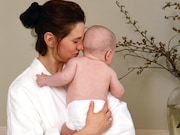Significant link identified, with nonlinear J-shaped dose-response relationship for increasing parity
FRIDAY, Dec. 28, 2018 (HealthDay News) — Parity is associated with cardiovascular disease risk, with a nonlinear J-shaped dose-response relationship observed, according to a meta-analysis published online Dec. 19 in the European Journal of Preventive Cardiology.
Wenzhen Li, from the Huazhong University of Science and Technology in China, and colleagues conducted a meta-analysis of cohort studies to quantitatively assess the correlation between parity and cardiovascular disease risk. They included 10 cohort studies with 150,512 incident cases of cardiovascular disease among 3,089,929 participants.
While comparing parity with nulliparity, the researchers found a significant association between parity and cardiovascular disease, with a summarized relative risk of 1.14. A potential nonlinear J-shaped dose-response relationship was observed between the number of parity and cardiovascular disease risk, with a summary risk estimate of 1.04 for an increase of one live birth. Similar J-shaped associations were seen between parturition number and cardiovascular disease, ischemic heart disease, or stroke risk.
“Doctors have a role to play here,” one of the study authors said in a statement. “Women should know that having children may raise their chance of future heart disease or stroke, and that more pregnancies could be increasingly risky. The good news is that there is a lot that women can do to prevent cardiovascular disease.”
Copyright © 2018 HealthDay. All rights reserved.








